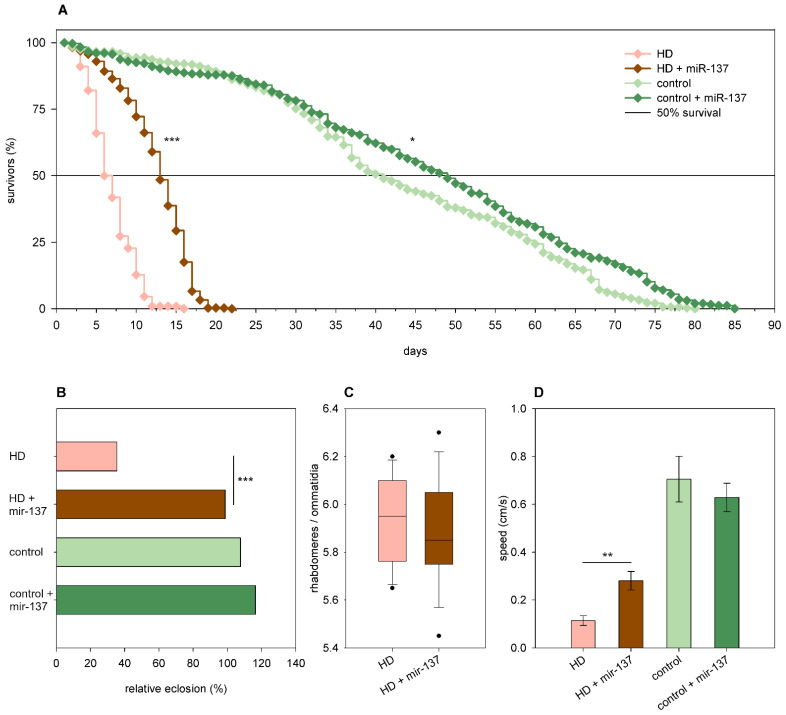Figure 8.
Overexpression of mir-137 ameliorates mHtt-induced phenotypes. (A) Overexpression of mir-137 increases the longevity of both Htt.Q25 expressing (control) and Htt.Q120 expressing (HD) flies. (B) mir-137 overexpression leads to a significant increase in the eclosion rate of HD flies, while it does not affect the eclosion rate of controls. The graph shows the relative eclosion of flies expressing Htt.Q120 or Htt.Q25 in the presence or absence of a mir-137 transgene as percent of non-expressing siblings. (C) Overexpression of mir-137 does not affect the number of visible rhabdomeres per ommatidia in the eyes of HD flies. The boxes show 25%, 50%, and 75% values, whiskers represent 10% and 90% values. (D) Overexpression of mir-137 increases the climbing speed of HD flies, while it does not have a similar effect on controls. Bars show average values, error bars indicate SEM. Significance levels (* p ≤ 0.05, ** p ≤ 0.01, *** p ≤ 0.001) are shown only between corresponding mir-137 overexpressing and non-overexpressing categories.

